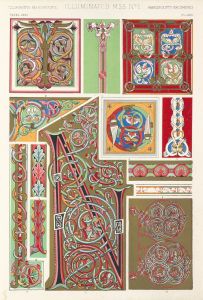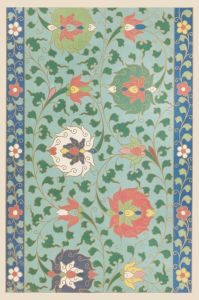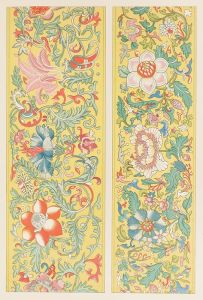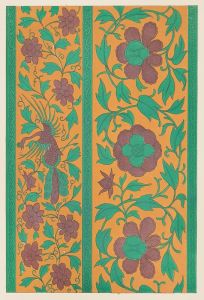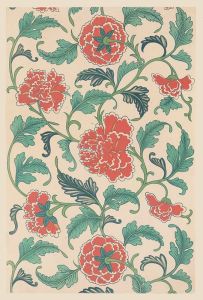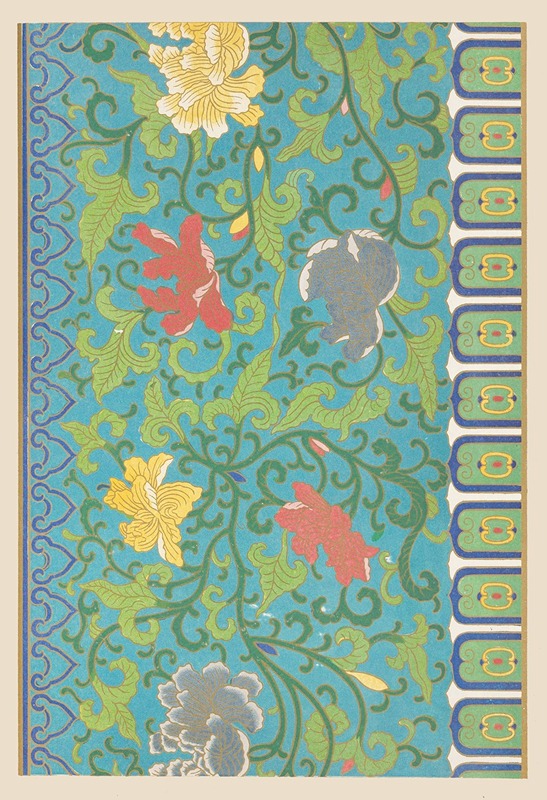
Examples of Chinese ornament, Pl.31
A hand-painted replica of Owen Jones’s masterpiece Examples of Chinese ornament, Pl.31, meticulously crafted by professional artists to capture the true essence of the original. Each piece is created with museum-quality canvas and rare mineral pigments, carefully painted by experienced artists with delicate brushstrokes and rich, layered colors to perfectly recreate the texture of the original artwork. Unlike machine-printed reproductions, this hand-painted version brings the painting to life, infused with the artist’s emotions and skill in every stroke. Whether for personal collection or home decoration, it instantly elevates the artistic atmosphere of any space.
"Examples of Chinese Ornament, Pl.31" is a plate from the influential design book "The Grammar of Ornament" by Owen Jones, first published in 1856. Owen Jones was a British architect and designer known for his work in color theory and his contributions to the decorative arts. His book, "The Grammar of Ornament," is a comprehensive collection of design patterns and motifs from various cultures around the world, aimed at serving as a source of inspiration for designers and artists.
Plate 31 specifically focuses on Chinese ornamentation, showcasing the intricate and symbolic designs characteristic of Chinese art. The inclusion of Chinese motifs in Jones's work highlights the 19th-century Western fascination with Asian art and design, a period when Orientalism influenced many aspects of Western culture. This plate, like others in the book, is a lithographic print, a popular method of reproduction at the time, which allowed for detailed and colorful illustrations.
The designs in Plate 31 reflect traditional Chinese artistic themes, such as the use of floral patterns, geometric shapes, and symbolic imagery. Chinese ornamentation often incorporates elements from nature, mythology, and philosophy, reflecting the cultural and spiritual values of Chinese society. Common motifs include dragons, phoenixes, lotus flowers, and cloud patterns, each carrying specific meanings and associations. For example, the dragon is a symbol of power and strength, while the lotus represents purity and enlightenment.
Jones's work was pioneering in its systematic approach to cataloging and presenting design elements from different cultures. He emphasized the importance of understanding the principles behind these designs rather than merely copying them. In his introduction to "The Grammar of Ornament," Jones outlined 37 propositions, which served as guidelines for creating harmonious and aesthetically pleasing designs. These principles underscored the significance of color, form, and proportion in ornamentation.
"Examples of Chinese Ornament, Pl.31" not only served as a visual reference for designers of the time but also contributed to the appreciation and understanding of Chinese art in the West. By presenting these designs in a scholarly context, Jones helped to elevate the status of decorative arts and encouraged cross-cultural exchange in the field of design.
The impact of "The Grammar of Ornament" extended beyond its initial publication. It became a standard reference for architects, designers, and artists, influencing the development of design education and practice. The book's emphasis on the universality of design principles and the beauty of diverse artistic traditions continues to resonate with contemporary audiences.
In summary, "Examples of Chinese Ornament, Pl.31" is a testament to Owen Jones's vision of a global design language, where the beauty and complexity of Chinese ornamentation are celebrated and studied as part of a broader appreciation of world art.





